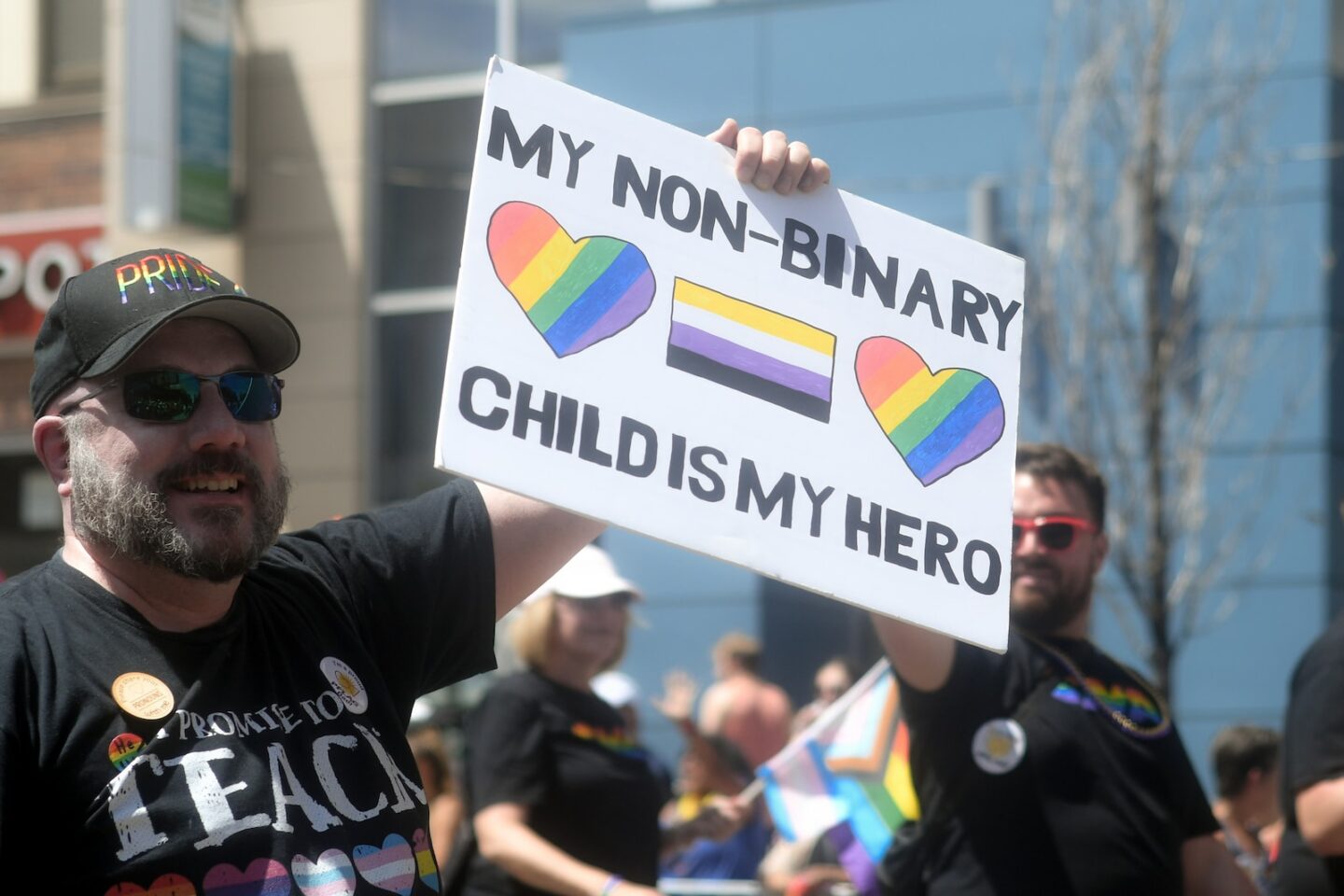Most of us have been raised on the belief that there are just two genders, male and female. This is often referred to as the ‘gender binary’.
The problem with the gender binary is that it oversimplifies the complexity of human identity and fails to capture the diverse (and super queer!) spectrum of the gender experience. It dismisses the existence of non-binary, genderqueer, and other identities that fall outside the social norm leaving many folks feeling like they don’t fit in.
What Does Non-Binary Mean?
In the most basic sense, non-binary means not aligning with the age-old binary concept of male vs. female gender. The term encompasses a huge spectrum of gender identities that fall outside the conventional definitions.
Some non-binary individuals might identify as a blend of both genders, some might not identify with any gender, while others might have a gender identity that fluctuates over time.
We wanna make sure to note that non-binary is not synonymous with androgynous, transgender, or gender-neutral, although some people might identify with these terms as well.
Crucially, non-binary is about the internal personal experience of gender, which may or may not correspond to an individual’s outward appearance or the gender they were assigned at birth. It’s about acknowledging and respecting the wonderful complexity and diversity of human gender identity.
Non-binary isn’t a modern invention
Throughout history, non-binary individuals across various cultures have challenged the notion that gender diversity is a recent phenomenon.
For example, indigenous cultures in North America recognised Two-Spirit people, while South Asian cultures acknowledged the Hijra community as a third gender, whilst in Samoa, the Fa’afafine embody both masculine and feminine qualities, challenging binary norms.
If we look at modern-day culture, singer Sam Smith is an iconic figure who publicly identifies as non-binary and uses they/them pronouns. Smith has said that they do not feel completely male or female, but instead exist somewhere in between. Another well-known figure is Alok Vaid-Menon, a gender non-conforming writer and performance artist, who uses they/them pronouns and regularly speaks out for gender diversity and inclusivity.
In everyday life, non-binary identities can be just as diverse. You might know someone who doesn’t feel comfortable being referred to as a man or woman and prefers gender-neutral pronouns. Or perhaps someone who identifies as gender-fluid, feeling more male some days and more female on others. These identities are all valid and part of the beautiful non-binary spectrum.
Why non-binary inclusion matters
Reports tell us that over half of non-binary folks feel uncomfortable sharing their identity in the workplace, and 90% worry that their identity won’t be respected. In acknowledging a friend or colleague’s non-binary identity, you validate their experience and show that you see them for who they truly are.

According to psychologists, our core identity has three main components: gender identity, sexual orientation, and our unique style or behaviour. When someone is misgendered it can be seriously confusing and hurtful. If we try to put limits on how someone expresses their gender, it can lead to feelings of anxiety and depression, possibly setting the stage for even more serious mental health issues further down the line.
Making an effort to understand non-binary identities helps you avoid assumptions and stereotypes about gender, changing the narrative and allowing people to make their own choices. With the knowledge that gender is not a binary concept, we urge you to practise leaving any preconceived notions about what someone’s gender ‘should’ be, at the door.
Identifying Non-Binary in Your Circle
Recognising non-binary identities begins with open communication. If someone in your life identifies as non-binary, they might choose to share it with you (that’s a privilege, btw, so they probably really trust you) but you shouldn’t make assumptions or force anyone to disclose their gender identity.
The most important thing to remember is that you can’t always tell someone’s gender just by looking at them. Non-binary people may present in all kinds of ways, and their appearance doesn’t necessarily indicate their gender identity. Just as with anyone else, the most respectful way to understand someone’s identity is to listen to how they describe themselves in their own words and honour that expression.
If someone does share their non-binary identity with you, respect their self-identification by using their preferred name and pronouns
How to Respect Non-Binary Identities
Use preferred pronouns: If someone tells you their preferred pronouns (e.g., they/them, ze/zir), make an effort to use them. If you’re not sure, it’s always better to ask politely than to make assumptions.
Avoid gendered language: Instead of ‘ladies and gentlemen,’ try using gender-neutral terms like ‘everyone’ or ‘folks.’
Educate yourself: Learn about non-binary identities and experiences through books, research and podcasts.
Speak up: If you hear someone disrespecting a non-binary person, speak up and challenge their views. Non-binary folks appreciate you.
Practice patience: We all make mistakes. If someone corrects you, apologise and do better next time.
Love,
Team Nonchalant x

